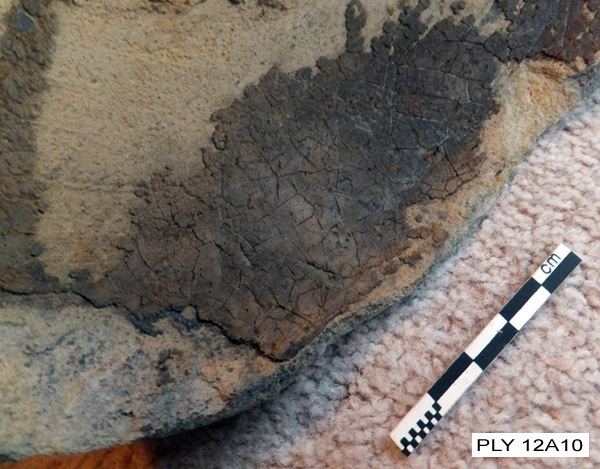Amphora (12A10)
This upper part of an amphora was recovered from Plymouth Sound by a diver in the 1970's; it was found buried in the seabed with just the rim of the neck showing above the sand. The amphora is remarkably clean and free from marine growth apart from on the upper part of the neck and on one handle, so was probably buried in sand for most of its time on the seabed.
At the time of discovery, the amphora was shown to the curator of the Plymouth City Museum and Art Gallery, who examined, drew and photographed the piece. At this point the amphora was tentatively identified as being of Mediterranean origin and from the 5th to the 7th century in date.
The amphora has recently been identified as a ‘Late Roman 1’ amphora (previously known as a Bii type amphora). This type of amphora was produced between the 4th and 7th centuries in the eastern Mediterranean, where it is a common find. Production has been identified at sites in southern Turkey and Cyprus. These amphorae may have been used to transport olive-oil or wine.
The amphora is made from a buff, sandy fabric and the walls are only 6mm thick at the lower edge. The maximum diameter of the remaining part of the body is 228mm and the body survives to a height of 154mm.The neck is 110mm high, with an internal diameter of 77mmat the rim and 101mm at the junction of the neck and body. The two handles measure up to 35mm wide by 29mm deep and join the neck high up just under the rim. On the lower, outside edge of the remaining body there are traces of the ribbing characteristic of Late Roman amphorae and the slightly twisted, grooved handles are also distinctive of this type. There are no painted markings on the outside of the amphora.
On the inside of the vessel there are traces of a dark brown residue, chemical analysis by Prof. Steve Hill at Plymouth University has shown that this residue was originally a clear, red resin and the amphora was used to transport red wine.
Imported ‘Late Roman amphorae’ of this and other types have been found at a number of post-Roman sites in western Britain and Ireland, particularly in the South West, although they remain relatively rare artefacts. ‘Late Roman 1’ amphorae were not imported to Britain during the Roman period but are usually thought to have been imported between the 5th and mid-6th century.
Maria Duggan, PhD Student, Newcastle University
![]() If you have any more information about these finds then please contact us.
If you have any more information about these finds then please contact us.
Images
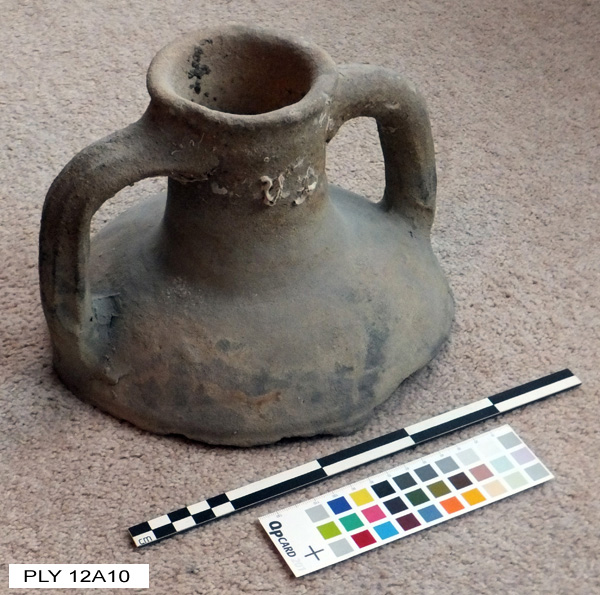 |
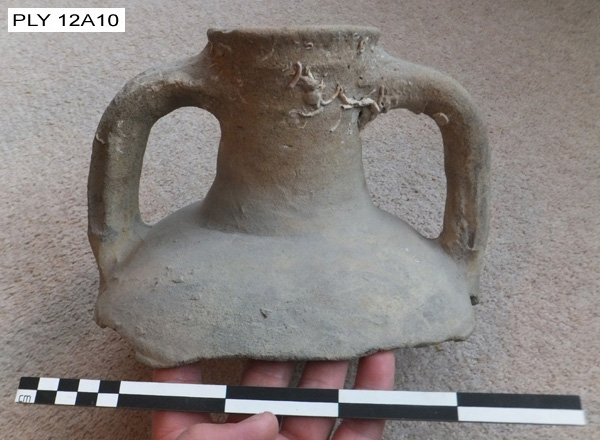 |
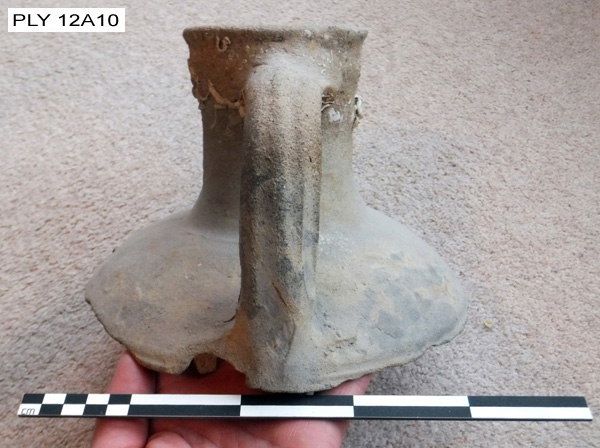 |
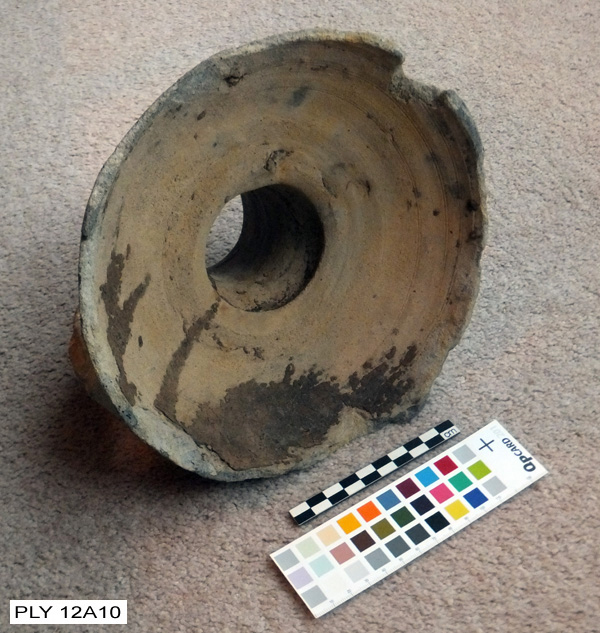 |
Brown residue on the inside of the amphora |
References
Campbell, E., 2007, Continental and Mediterranean imports to Atlantic Britain and Ireland, AD 400-800, York: Council for British Archaeology Research Report 157
University of Southampton, 2005, Roman Amphorae: a digital resource, York:Archaeology Data Service. Available at: http://archaeologydataservice.ac.uk/archives/view/amphora_ahrb_2005/index.cfm?CFID=573996&CFTOKEN=39545028[accessed: 16.01.2013]. (doi:10.5284/1000021)

